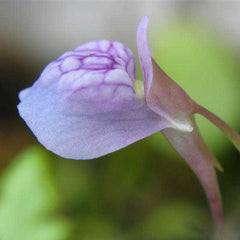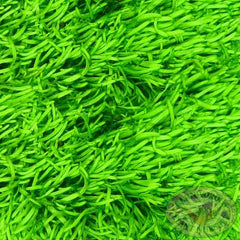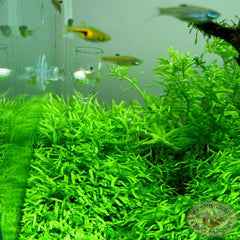
Growing Tips for Utricularia graminifolia



Utricularia graminifolia
Soil: peat bottom in their water
Container: shallow water filled tub or aquarium
Watering: boggy water rich in tannins, pH 5.0-6.5.
Light: partial sun to dappled light
Temperature: tropical
Humidity: 100%, submerged aquatic
Location: tropical planted aquarium, bog garden pool, windowsill, greenhouse
Dormancy: no.
Habitat
Utricularia graminifolia is native to springs and streambanks of SE Asia, including: southern China, India, Sri Lanka, Burma, Laos and Vietnam. It is amphibious, growing along the water margins both in and out of the water. It prefers nutrient poor, soft, acidic waters with pH 5.0-6.5, and typically grows in dappled, low light. It has a matting habit, and frequently forms wide spread carpets of leaves. Its carnivorous traps are bladder like structures along the branching network of stolons. It feeds on infusoria, small aquatic organisms.
Culture
U. graminifolia is an excellent foreground tropical aquarium plant. It can spread nicely along the bottom, and grow densely, once established. Waters should be tropical, nutrient poor, soft and acidic. Light should be low, and on a timer, 10-14 hours/day. When first introduced to the aquarium, anchor it down with gravel, coir discs or stone wool. Tweezers may help. Lower the brightness initially for 6-8 weeks, until it is established. It benefits from CO2 injection. Chemical fertilizing should not be necessary, but it will benefit from a diet of Living infusoria.
Propagation
U. graminifolia can be propagated from divisions of the rhizome mats. Seeds are slow and need steady conditions.
Dormancy
U.graminifolia is a tropical and does not require dormancy.
Feeding
The bladders, or traps, are below the soil and quite small. It's common “foods” are infusoria, small crustacea and ciliates. Catching abundant prey is a significant growth factor. They do a marvelous job of attracting and catching prey all on their own when provided with an adequate supply.
Other Considerations
It can be challenging to establish. 1 clump/20 square inches is recommended for initial planting. Consider starting by growing it as a terrestrial bladderwort in a peat slurry to build up the plant material before planting. Avoid burrowing fish.
